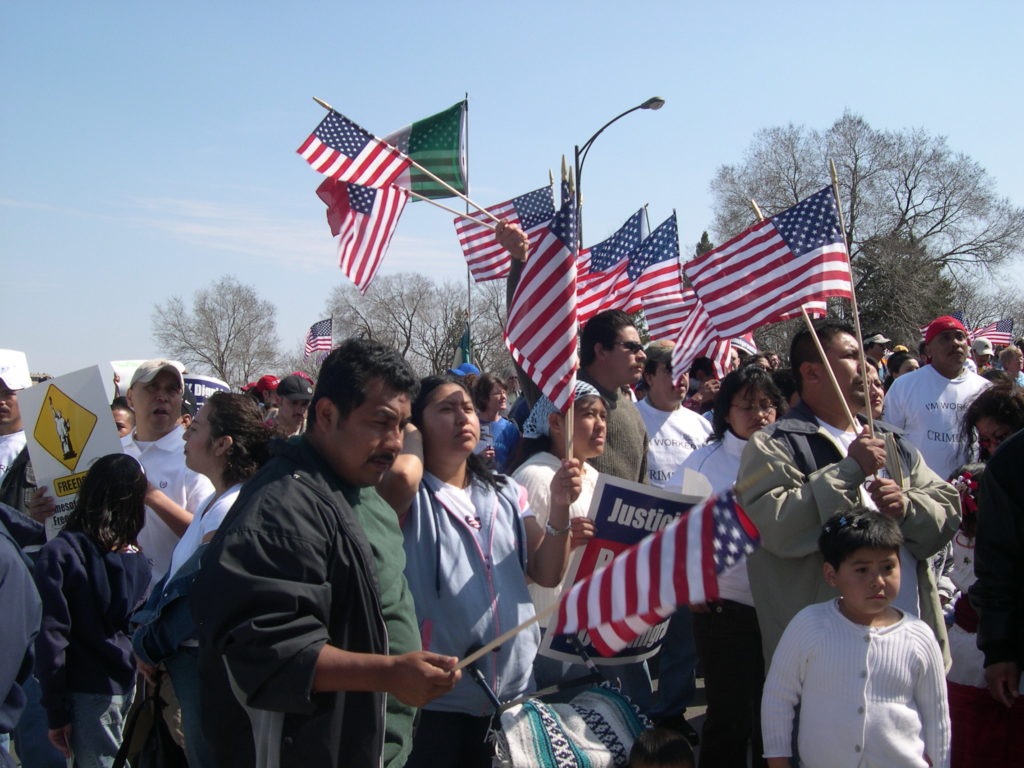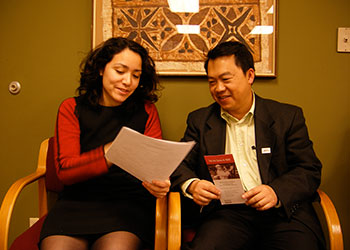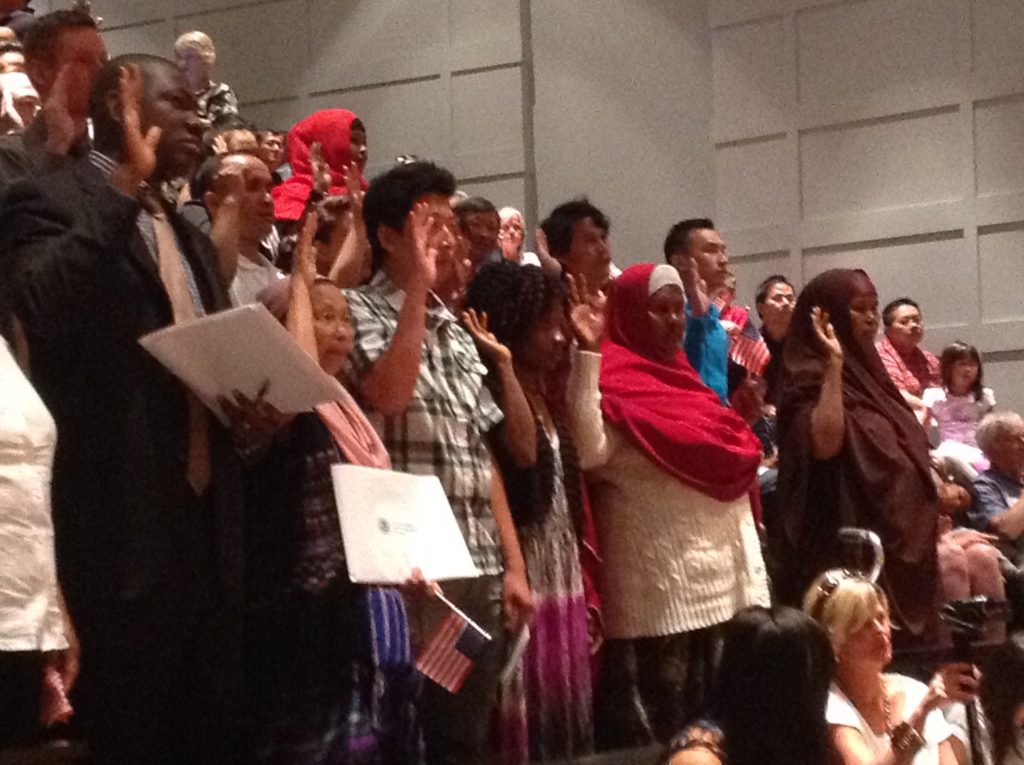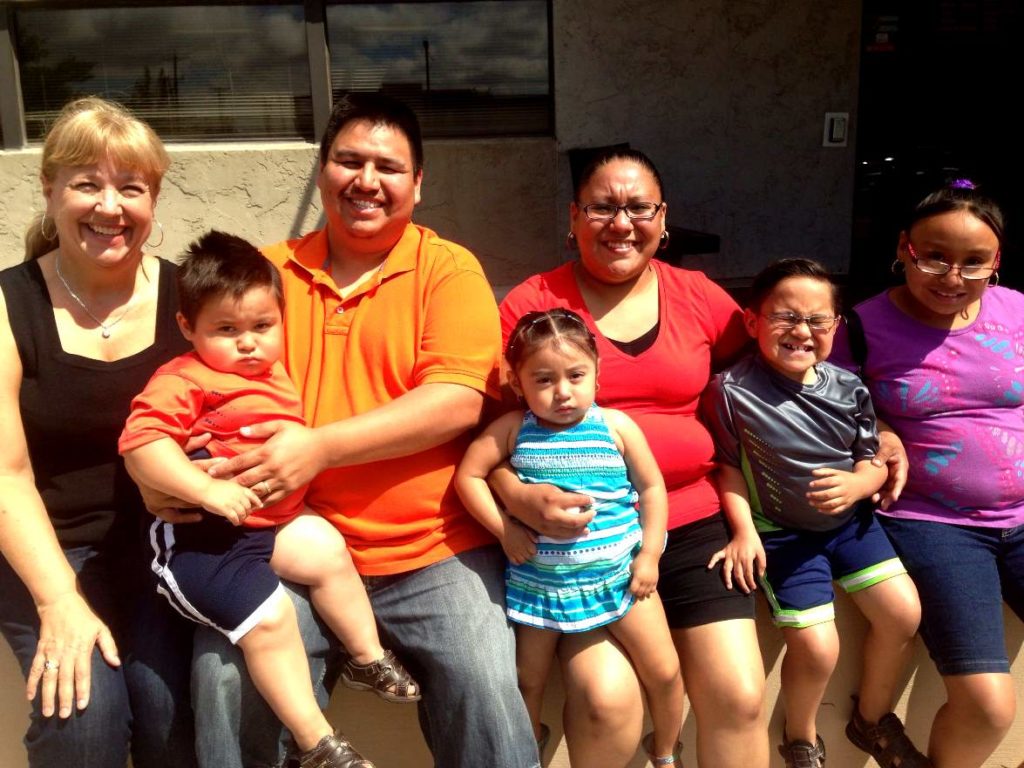
Want to know what it’s like to be a lawyer for immigrants under the anti-immigrant Trump administration? To work in a legal aid office like the Immigrant Law Center of Minnesota? Here’s a personal story from one of our hard-working attorneys:
I really like my job as a nonprofit immigration attorney very much. I am deeply dedicated to this work and I appreciate the opportunity to do something I believe in as a livelihood. But I am also drained, depressed, angry, and really afraid for so many people in this country who any day could have their entire world torn apart.
The majority of people being picked up by ICE under this administration have absolutely no criminal history, or just minor driving violations like most people who ever drive. I saw a recent cite saying 100 people per day are currently being arrested and detained by ICE.
But unlike people fortunate enough to be a U.S. citizen or have documented status, undocumented people are being arrested and losing everything: their families, their jobs, their homes, their safety, and their dreams.
I use the word “fortunate” for U.S. citizens or people with secure immigration status because we should acknowledge it’s a question of sheer luck for the most part: what country you’re born in, or who your family members are, whether you fit one of the extremely few and excruciatingly specific categories of some other type of immigration eligibility, and whether you have the finances and connections and knowledge to file the documents and pay the fees and wait the years until you obtain status. To say nothing of whether you happen to be “fortunate” as to your skin tone, facial features, accent, religion, sexual orientation, gender, etc. so as to avoid a lifetime of continued systemic injustice, harassment, micro aggressions, or worse by both public and private actors in this country. But that’s a (very) connected yet separate issue.
I’m lately seeing a fair number of good people who I would expect to be aggressively fighting for people so disenfranchised and under attack, just sitting by silently. I’m also seeing a lot of good people very misinformed and regurgitating BS about “getting in line” and “the law is the law” and so on. There is no line, and we all should know the law is not the law, neutral and benign (not for people of color, not for immigrants). When was the last time you were arrested and/or ejected from the United States, the country that is your home, after a driving ticket?
To those people, I’d just like to say, please, open your eyes and ears. People’s lives are being destroyed. Children are losing their parents, spouses their partners. People are being deported to countries where they have nothing and are sometimes then being killed. U.S. taxpayers are spending insane quantities of money paying to keep harmless people, who were largely working, paying taxes, and supporting their families and communities, in jails and detention centers instead.
And besides that, millions of people in this country, many of whom coincidentally are absolutely necessary to our quality of life (providing our food, cleaning our buildings, building our homes, and so much more) are living in utter terror that they could be next.
Your silence is complicity, and your vocal ignorance is worse. Many people in government fully intend for this to continue and accelerate, for reasons of racism, nativism, and greed. (There are great profits to be made by the already vastly wealthy and politically powerful private prison industry.) The time to speak out, fight back, and demand otherwise is yesterday. Please. Let’s get on it.










